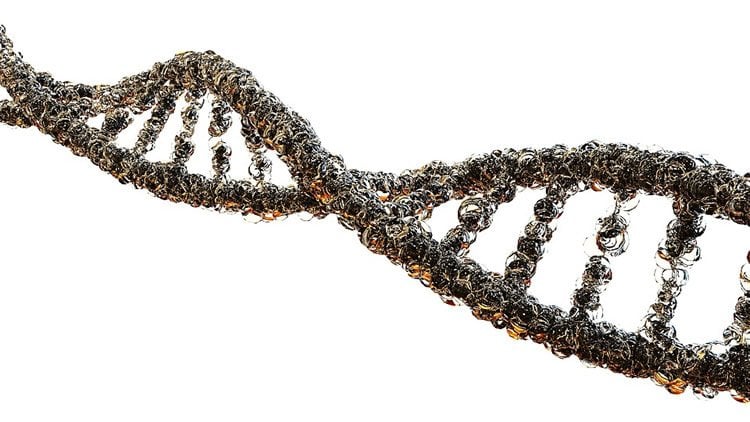Summary: A new study reports specific genes are linked to differences in brain structure in children with ASD.
Source: University of Cambridge.
A team of scientists at the University of Cambridge has discovered that specific genes are linked to individual differences in brain anatomy in autistic children.
Previous studies have reported differences in brain structure of autistic individuals. However, until now, scientists have not known which genes are linked to these differences.
The Cambridge team analysed magnetic resonance imaging (MRI) brain scans from more than 150 autistic children and compared them with MRI scans from similarly aged children but who did not have autism. They looked at variation in the thickness of the cortex, the outermost layer of the brain, and linked this to gene activity in the brain.
They discovered a set of genes linked to differences in the thickness of the cortex between autistic kids and non-autistic children. Many of these genes are involved in how brain cells (or neurons) communicate with each other. Interestingly, many of the genes identified in this study have been shown to have lower gene activity at the molecular level in autistic post mortem brain tissue samples.
The study was led by two postdoctoral scientists, Dr Rafael Romero-Garcia and Dr Richard Bethlehem, and Varun Warrier, a PhD student. The study is published in the journal Molecular Psychiatry and provides the first evidence linking differences in the autistic brain to genes with atypical gene activity in autistic brains.

Dr Richard Bethlehem said: “This takes us one step closer to understanding why the brains of people with and without autism may differ from one another. We have long known that autism itself is genetic, but by combining these different data sets (brain imaging and genetics) we can now identify more precisely which genes are linked to how the autistic brain may differ. In essence, we are beginning to link molecular and macroscopic levels of analysis to better understand the diversity and complexity of autism.”
Varun Warrier added: “We now need to confirm these results using new genetic and brain scan data so as to understand how exactly gene activity and thickness of the cortex are linked in autism.”
“The identification of genes linked to brain changes in autism is just the first step,” said Dr Rafael Romero-Garcia. “These promising findings reveal how important multidisciplinary approaches are if we want to better understand the molecular mechanisms underlying autism. The complexity of this condition requires a joint effort from a wide scientific community.”
Funding: Funding provided by Medical Research Council, Autism Research Trust, Wellcome, Templeton World Charity Foundation.
Source: Craig Brierley – University of Cambridge
Publisher: Organized by NeuroscienceNews.com.
Image Source: NeuroscienceNews.com image is in the public domain.
Original Research: Open access research in Molecular Psychiatry.
doi:10.1038/s41380-018-0023-7
[cbtabs][cbtab title=”MLA”]University of Cambridge “Genes Linked to Brain Anatomy in Autism.” NeuroscienceNews. NeuroscienceNews, 27 February 2018.
< https://neurosciencenews.com/autism-brain-structure-genetics-8572/>.[/cbtab][cbtab title=”APA”]University of Cambridge (2018, February 27). Genes Linked to Brain Anatomy in Autism. NeuroscienceNews. Retrieved February 27, 2018 from https://neurosciencenews.com/autism-brain-structure-genetics-8572/[/cbtab][cbtab title=”Chicago”]University of Cambridge “Genes Linked to Brain Anatomy in Autism.” https://neurosciencenews.com/autism-brain-structure-genetics-8572/ (accessed February 27, 2018).[/cbtab][/cbtabs]
Abstract
Synaptic and transcriptionally downregulated genes are associated with cortical thickness differences in autism
Differences in cortical morphology—in particular, cortical volume, thickness and surface area—have been reported in individuals with autism. However, it is unclear what aspects of genetic and transcriptomic variation are associated with these differences. Here we investigate the genetic correlates of global cortical thickness differences (ΔCT) in children with autism. We used Partial Least Squares Regression (PLSR) on structural MRI data from 548 children (166 with autism, 295 neurotypical children and 87 children with ADHD) and cortical gene expression data from the Allen Institute for Brain Science to identify genetic correlates of ΔCT in autism. We identify that these genes are enriched for synaptic transmission pathways and explain significant variation in ΔCT. These genes are also significantly enriched for genes dysregulated in the autism post-mortem cortex (Odd Ratio (OR) = 1.11, Pcorrected 10−14), driven entirely by downregulated genes (OR = 1.87, Pcorrected 10−15). We validated the enrichment for downregulated genes in two independent data sets: Validation 1 (OR = 1.44, Pcorrected = 0.004) and Validation 2 (OR = 1.30; Pcorrected = 0.001). We conclude that transcriptionally downregulated genes implicated in autism are robustly associated with global changes in cortical thickness variability in children with autism.






